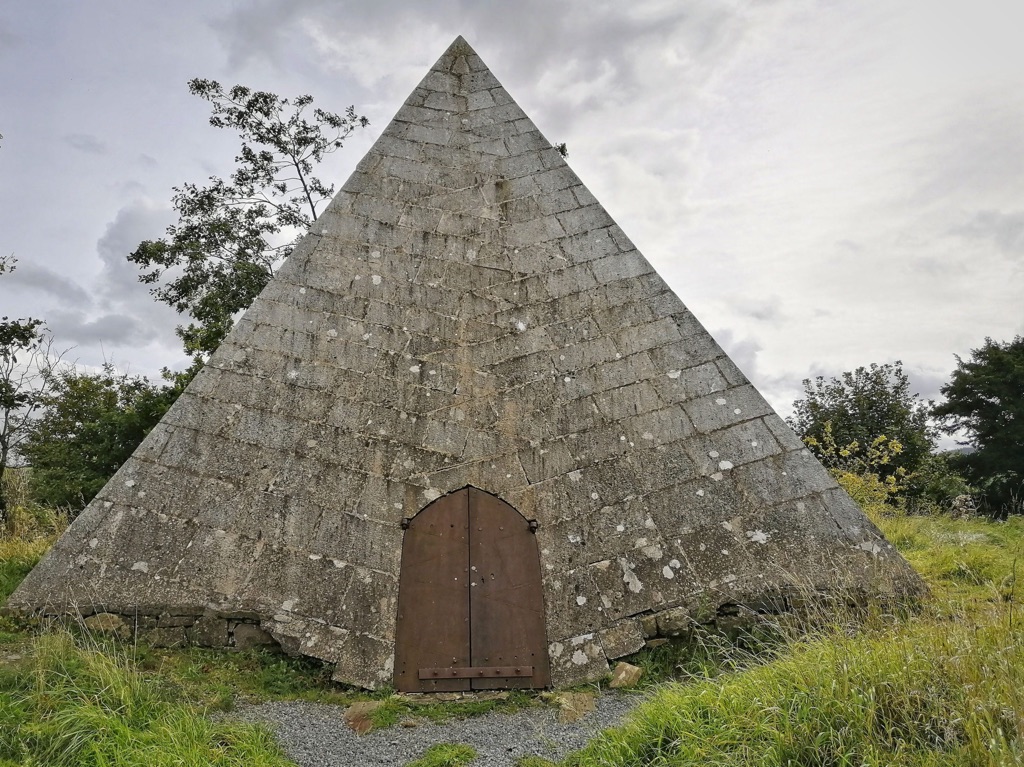Summary
Enigmatic Origin
Nestled in the serene Irish countryside, the Kinnitty Pyramid stands as a unique monument shrouded in history. Found within the graveyard of St. Finnian’s Church, this 30-foot-tall pyramid is a striking presence. Built in 1834 by the Bernard family, local gentry of the time, its purpose remains a source of intrigue. Unlike the grand mausoleums or lavish burial chambers of ancient rulers, the Kinnitty Pyramid is modest yet mystifying, compelling visitors to dive into its past.
Get your dose of History via Email
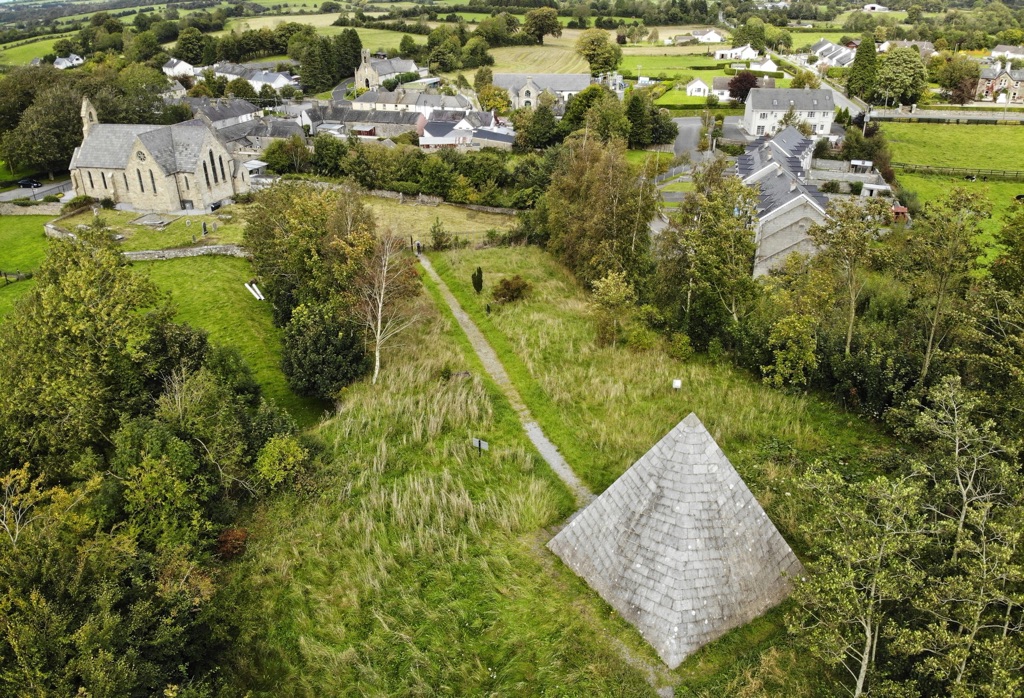
Architectural Significance
The Kinnitty Pyramid’s architecture is a rare find in Ireland. It mirrors the design of Egypt’s ancient pyramids, and this choice is said to reflect the Bernard family’s fascination with Egyptian culture. Constructed of local stone, its durability has withstood the test of time, allowing it to remain intact over the centuries. The pyramid serves as a family tomb, housing members of the Bernard lineage, linking the local legacy to the immortality of ancient Egyptian structures.
Myth and Tourism
Visitors to Kinnitty Pyramid are often drawn by the tales and legends woven around it. Its mystical allure is enhanced by stories of ancient curses and supernatural events, which keeps curious explorers coming. Today, it is not just a historic site but also a cultural landmark, contributing to Ireland’s rich tapestry of tourist destinations. While offering a tranquil spot for reflection, the pyramid also ignites the imagination, making it an essential visit for history buffs and adventure seekers alike.
Historical Background of Kinnitty Pyramid
The Spark of an Idea
Perched in the heart of Ireland’s County Offaly, Kinnitty Pyramid stands as a memorial of bygone days. The Bernard family, once owners of Kinnitty Castle, envisioned this pyramid as their final resting place. Built in the 19th century, it is a testament to their influence and interest in Egyptian culture—an unusual sight against the green backdrop of the Slieve Bloom Mountains.
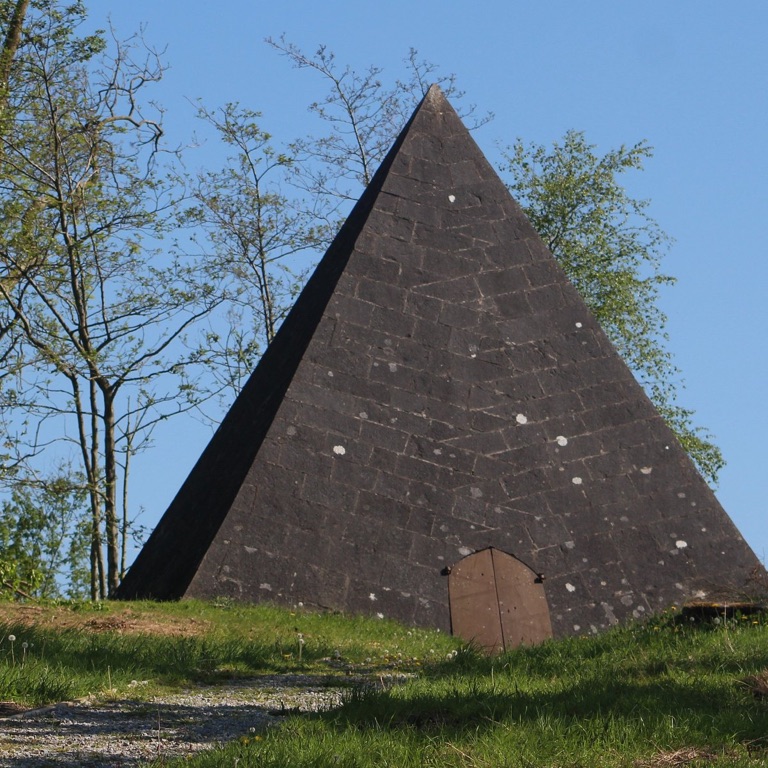
A Fusion of Cultures
Though Ireland and Egypt are worlds apart, the Kinnitty Pyramid bridges this gap. The Bernard family’s travels likely inspired the pyramid’s design, marrying Irish heritage with distant Egyptian grandeur. Despite the stark contrast, the structure symbolizes a cultural connection that extends beyond eras and borders, drawing fascination from far and wide.
Rising Above Time
Time has shown mercy to Kinnitty Pyramid. It has seen generations pass by, remaining largely unscathed. The pyramid’s resilience owes much to its construction—stone by stone, each piece carefully chosen from the locality. In surviving the changing Irish weather, it stands robust, protecting the memories of those within.
While it may be smaller than its grand Egyptian counterparts, Kinnitty Pyramid does not falter in awe. It is a proud, solitary figure among traditional Celtic crosses in the churchyard, claiming its place in history. Visitors remain intrigued by its endurance and the stories encapsulated within its walls.
Today, Kinnitty Pyramid is not just a relic; it is a vibrant piece of the community. Locals take pride in this landmark, and tourists are eager to explore its unique story. As a bridge between the past and the present, it serves as a beloved icon of County Offaly, inviting all to uncover the layers of its mystic past.
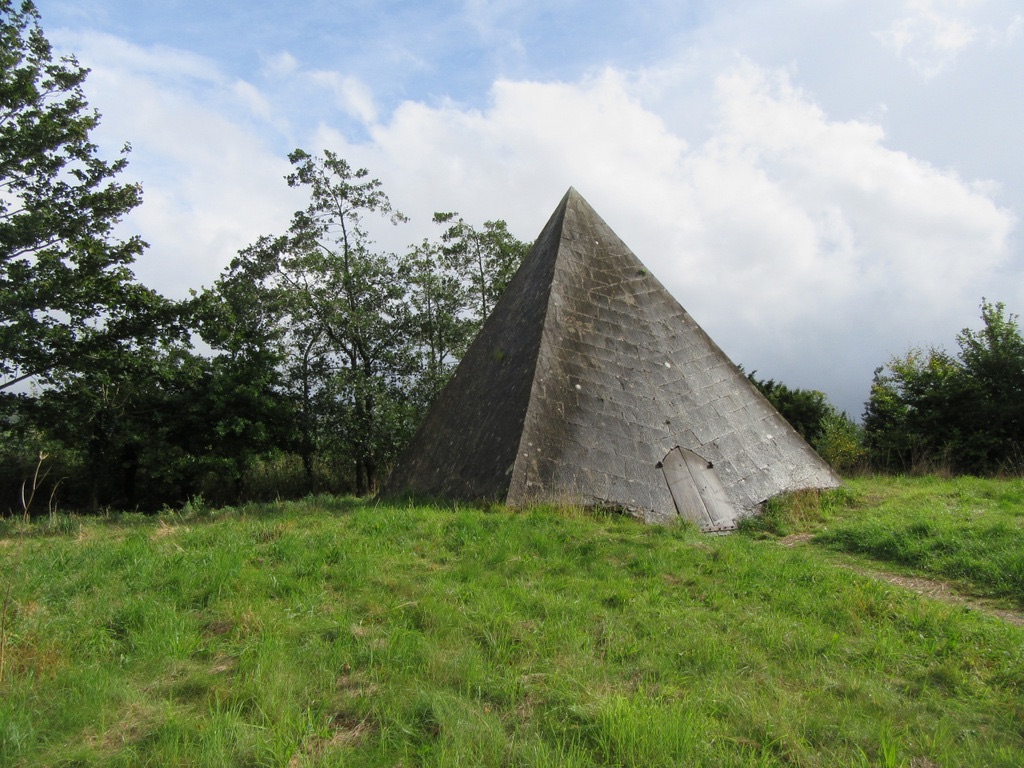
The Discovery of Kinnitty Pyramid
Unveiling the Pyramid
The Kinnitty Pyramid, although not hidden, was an architectural enigma that caught wider attention in the late 20th century. Local historians stumbled upon archival records that detailed its construction. This discovery happened as researchers delved into the history of Kinnitty Castle and its grounds, where the pyramid is located.
Inscriptions Tell a Tale
Etched into the stone are inscriptions bearing the names of the Bernard family. Through these, researchers pieced together the pyramid’s origins. Erected in the 1830s, it was the Bernard family who commissioned the monument as a tribute to their ancestry and status in society.
Preservation Efforts Begin
Once the importance of the Kinnitty Pyramid was recognized, steps were taken to preserve it. Conservationists and community groups advocated for its care. They recognized the pyramid’s value not just as a monument but as a cultural treasure with the potential to attract visitors and scholars alike.
Now, the site is better understood and more accessible to the public. Restoration work has cleaned and stabilized the structure. The paths around it have been improved, making it a highlight for tourists exploring the historic Irish midlands.
The Kinnitty Pyramid has emerged from obscurity to become a celebrated piece of Ireland’s heritage. Its blend of Irish and Egyptian influence continues to fascinate those who discover it. As more visit the site, its story becomes an enduring part of local and national history.
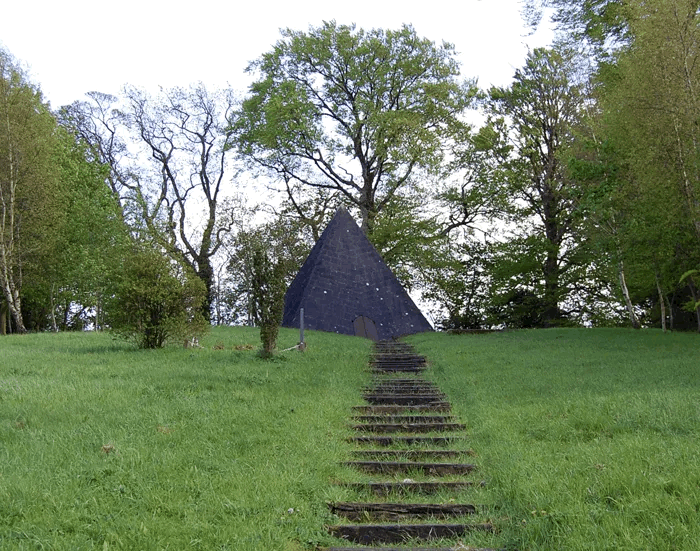
Cultural Significance, Dating methods, Theories and Interpretations
A Spotlight on Cultural Merging
The Kinnitty Pyramid’s creation reflects a unique moment where Irish aristocracy intertwined with an Egyptian motif. It exemplifies the 19th-century fascination with Egyptology in Europe, sparked by Napoleon’s campaign in Egypt. Unlike other European expressions of this trend, Kinnitty Pyramid is a direct cultural imprint in rural Ireland, showcasing how global historical currents have local impacts.
Dating the Enigma
Although there’s no mystery about its 19th-century origins, uncovering the precise age of Kinnitty Pyramid took careful examination. Historians used archival documents and land records to confirm its construction post-dates the Bernard family’s 18th-century reign. Styles of masonry and carbon dating of the mortar provided a precise timeline for when the pyramid rose among the verdant Irish lands.
Theories of Origin
Debates hover around the pyramid’s purpose and inspirations. Some suggest it was a symbolic gesture aligning the Bernards with the immortality of pharaohs, while others infer a simply aesthetic choice. Without definitive records from the builders themselves, the pyramid invites various interpretations, each enriching its story.
Interpretations of the Kinnitty Pyramid also dive into psychology. They examine the desire for legacy and the impact of travel and cultural exchange on identity. The pyramid is a physical legacy that captures the imagination, revealing aspects of the human experience transcending time and place.
Across discussions, one consensus remains: Kinnitty Pyramid is a cultural gem, a testament to Ireland’s layered history. Its continued study provides insights into the universality of cultural expression and the mysteries of human endeavor, making it a significant study for both historians and tourists interested in Europe’s multifaceted heritage.
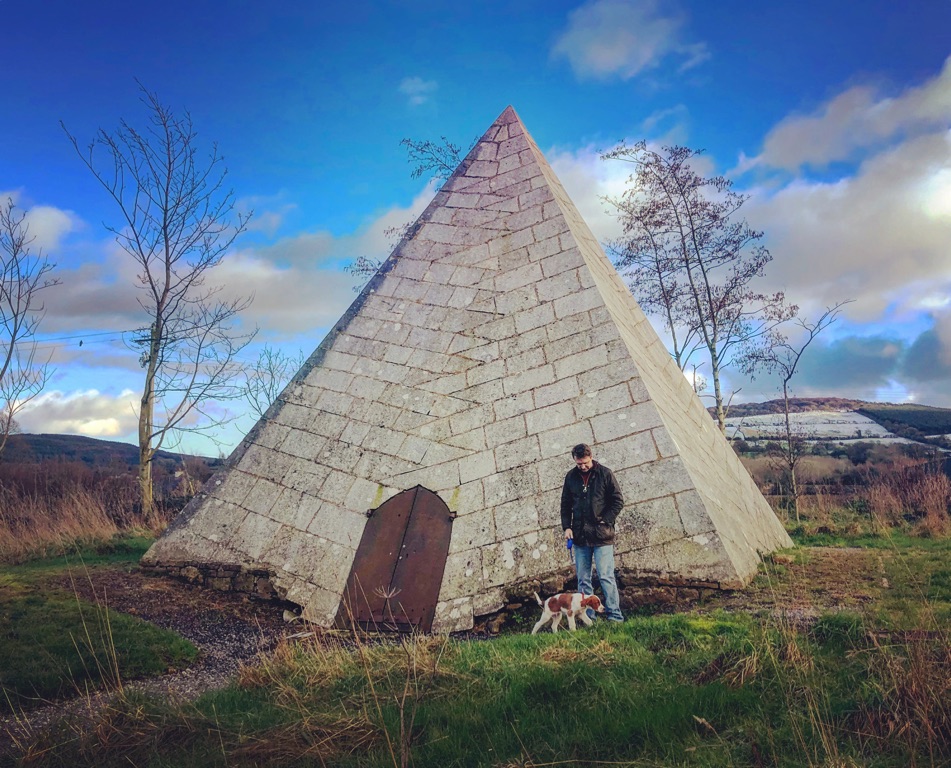
Conclusion and Sources
In a landscape dotted with ancient ruins and historical marvels, the Kinnitty Pyramid distinguishes itself with its unique blend of Irish and Egyptian heritage. The enigmatic structure, while rooted firmly in the local history of County Offaly, touches upon universal themes of cultural exchange, the quest for immortality, and the human inclination towards monumental legacies. Its existence encourages ongoing research and interpretation, offering insights into the past while contributing to the vibrant cultural tapestry of present-day Ireland.
For an in-depth understanding of the pyramid’s historical context and construction, “Kinnitty: A Parish History” is an invaluable resource, providing local archival records and anecdotal accounts from the region. Coupled with comprehensive studies of 19th-century Egyptomania, such as “Egyptomania: A History of Fascination, Obsession and Fantasy” by Ronald H. Fritze, the significance of the Kinnitty Pyramid within a wider cultural phenomenon can be appreciated.
To explore the broader themes of cultural legacy and memory embodied by such monuments, “The Past as Legacy” by Luke Gibbons offers a profound discourse on how historical sites like Kinnitty Pyramid continue to shape identity and collective memory. For those keen on the architectural aspects, a study of similar structures in “The Architecture of the Afterlife” by Howard Middleton-Jones gives context to the pyramid’s design choices and construction techniques.
Combine these texts with a visit to the site itself, and the Kinnitty Pyramid reveals itself as not just a peculiar landmark in an Irish graveyard but as a standing invitation to explore the interconnectedness of world cultures. Ultimately, it reminds us that history is not just about the preservation of the past; it is also about understanding the influences that continue to define our present and future.
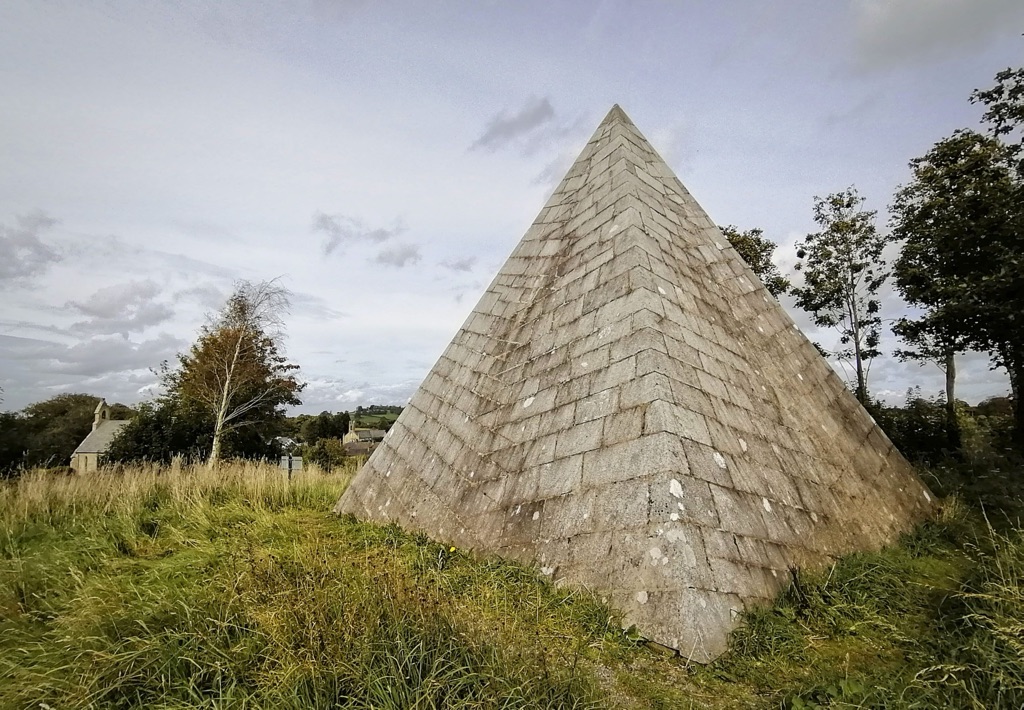
For further reading and to validate the information presented in this article, the following sources are recommended:
Or you can check any of these reputable archaeological and historical texts:
Gibbons, L. (2020). The Past as Legacy. Oxford University Press.
Fritze, R. H. (2016). Egyptomania: A History of Fascination, Obsession and Fantasy. Reaktion Books.
Middleton-Jones, H. (1999). The Architecture of the Afterlife. Green Magic.

